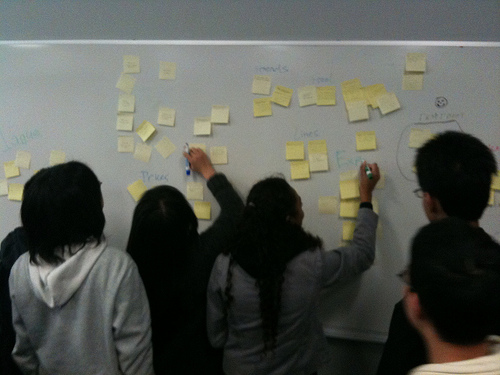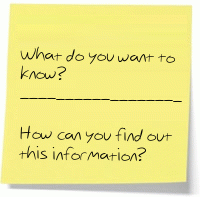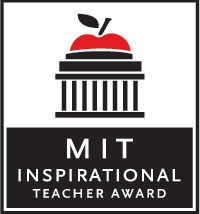Green Tea and Sticky Notes
Day 118. (I think.) My teaching practice has been reduced to two major components: yellow sticky notes and strategic use of caffeine. The latter should be familiar to the majority of you. But the former I just learned about this year.
A couple months ago, my friend Teresa Brazen came in to the Introduction to Programming class as a guest speaker and taught my students about user experience design. One of the activities she did with them involved individual brainstorming on post-it notes (writing one idea per note) and then putting these up on the whiteboard so they could be moved around and clustered into groups of related ideas. It worked better than a lot of other groupwork techniques I’ve seen. There’s no single magic component, but a number of strong motivators:
- Kids like post-it notes. They’re adult and official and they stick to stuff.
- Everyone really wants to write during the limited time given so they’ll have things to post on the wall.
- They get to stand up and move around. And yet each stage is discrete, which keeps things under control.
After watching Teresa do it, I used the same technique to help my students brainstorm interview questions for the 5th grade educational games project. And I just used a variant of it today to help students decide what they want to observe when watching the younger students play their game demos later this week. First, I had everyone individually write what would be helpful to find out from the 5th grade students. Then, I had them go back to each post-it, draw a horizontal dividing line, and then think of a way to find out that thing without asking directly.
Then I told them they had to put all their group’s notes into three categories. They could divide them up any way that made sense to them, but they had to make exactly three groupings (since there are three people on each of these teams). It was really interesting to hear the groups report out the different ways they split things up. One team did it by type of observation — listening to voices, looking at faces, and looking at the computer interaction. Another did it by type of response — positive reactions, negative reactions, and evidence of learning. Each student within the group took a single category (and they got to stick all those post-its together) and started creating a worksheet that they’ll finish, print, and use later this week to collect observations. Everything I’ve described so far happened within an hour.
I mention all this because I think that stories about how instructional techniques actually work are really important. It would be silly for me to write up sticky notes as a classroom activity without telling you the background. These details make a big difference both in accepting the technique and in being able to apply it. Handing out the raw materials for kick-me signs would be a total mistake in some classrooms. Doing this kind of activity all the time might diminish the impact. Using it for activities that don’t really benefit from collaboration would be a waste. But for me, this is one of the best instructional tricks I’ve learned this year and I’m glad I’ve added it to my repertoire. Thanks, Teresa!












5 Comments
Leave a CommentTrackbacks